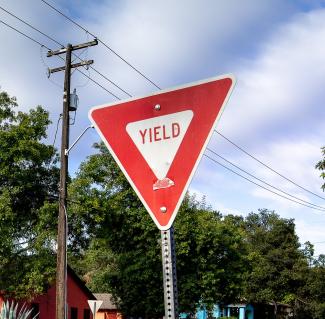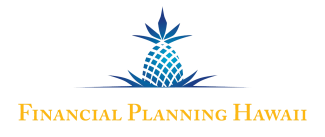
Should you redeem your Series I savings bonds now that the 6-month annualized rate is just 3.38%?
Should You Cash in Your Series I Savings Bonds Now that the Interest Rate Has Dropped?
By John H. Robinson, Financial Planner (May 2023)
From late 2021 through October 2022, I was among the legions of financial planners who were proactively encouraging consumers to purchase Series I Savings Bonds to take advantage of the historic high six-month yields that were tied to the inflation rate as measured by the Consumer Price Index for urban consumers (CPI-U).
Consumers who purchased I-bonds between November 1, 2021 and April 30, 2022 earned an annualized yield of 9.62% for the first six months, and 6.89% for the next six months. However, the rate for the new 6-month period beginning May 1 2023 is just 3.38%. The current 3.38% is not competitive relative to the yield most consumers can earn on comparably secure FDIC- insured certificates of deposit and/or U.S. treasury securities.
Buying New I- Bonds vs. Holding Old I-Bonds
In determining whether to hold or redeem your I-bonds, it is important to understand the interest rate structure of Series I savings bonds. Specifically, the stated interest rate is comprised of two components – a fixed rate that is set at the time of purchase and remains unchanged for the 30-year life of the bond and a variable rate that is reset every six months based on the CPI-U. From May 1, 2020 through October 31, 2022, the fixed rate on I-bonds was 0%. Thus, the millions of American consumers who purchased I-bonds from November 1 2021 through October 31 2022 will only earn interest at the CPI-U rate each year.
In contrast, consumers who purchased new I-bonds between November 1, 20022 and April 30, 2023 will earn an additional .4% fixed rate on top of the variable inflation-indexed rate. Further, the Treasury Department just bumped the fixed rate up from .4% to .9% for all I-bonds issued since May 1, 2023. Thus, someone who purchases an I-bond today will earn approximately 4.3% annualized interest (.9% fixed + 3.38% variable) for the next six months, while those of us who purchased during the peak CPI periods are earning just the 3.38% variable rate.
The highest the fixed component of I-bond interest has ever been is 3.4% which is still being paid on Series I bonds issued between May and November 2000. Investors who purchased those bonds earned more than 13% interest(annualized) from November 2021 through April 2021, and are still crushing roughly a 7% yield for the current 6-month period. These bonds will mature in 2029.
As you can see, the decision to sell or hold I-bonds today may be influenced by the absence or existence of the fixed interest rate component.
So, Should You Redeem Your I-Bonds If They Have a 0% fixed rate?
Most financial planners and other personal finance experts are discouraging consumers from bailing, even if the absence of a fixed rate component makes the yield uncompetitive in the current interest rate environment. The reasons cited include the continued tax-deferred growth and a guarantee of keeping pace with the cost of living over time. For the record, I plan to redeem the Series I savings bonds I purchased in April 2022.
My reasons for redeeming are two-fold. First, while it is true that the current bonds will keep pace with the cost of living, this strategy works best when inflation is expected to continue to rise. However, if you believe, as I do, that the Fed will be successful in reining in inflation, I would rather take my money out today to lock in the 5%+ current yields on CDs for a number of years. If the CPI settles at around 2-3% for the next few years, I will be pleased to still be earning 5% or more.
The second reason I plan to redeem my I-bonds is that they are burdensome to manage. The $10,000 limit per person per year paired with the glitchy, poorly-serviced TreasuryDirect website makes them too much of a headache to be worth the bother. In my case, I purchased $10,000 I-bonds each for my wife, my four children, and me. In earlier FPH Blog posts, I recounted the challenges and months-long bureaucratic delays we faced in getting accounts established for three of my family members after the TreasuryDirect website rejected their original applications. I also chronicled the 10-month odyssey I experienced in getting $20,000 of over-contributions refunded to me. The time and aggravation of investing through the TreasuryDirect website represent a very real frictional cost that, to me, outweighs the value of the additional interest we earned.
How do I redeem my Series I savings bonds?
Consumers who purchase I bonds should understand that the bonds MUST be held for at least 12 months and that a 3-month interest penalty will be imposed for redemptions made within 5 years of purchase. The interest penalty is calculated as the previous 3 months' interest. It is important to understand that this 3-month penalty is NOT calculated based on the current interest rate, but rather on the trailing 3 months' interest. Using my own situation as an example, If I were to redeem my I-bonds at the end of this month (May 2023), I would be charged 1 month’s interest at the current annualized rate of 3.38% plus 2 more months’ interest at the prior 6.89% rate. Thus, I plan to redeem at the end of July so that my 3-month interest penalty is entirely calculated from the lower 3.38% rate.
For all of the humbug I have experienced with the TreasuryDirect program, the process of redeeming seems fairly simple, and the Treasury offers a helpful 4-minute instructional Youtube video.
Related Reading
I-bonds interest rates (TreasuryDirect.gov)
Procrastinators, Rejoice: The 6.89% I bonds Will Beat the Old 9.62% Bonds in Just 4 Years
John H. Robinson is the owner/founder of Financial Planning Hawaii, Fee-Only Planning Hawaii, and Paraplanning Hawaii. He is also a co-founder of fintech software-maker Nest Egg Guru.
DISCLOSURES
Securities offered through J.W. Cole Financial, Inc. (JWC) member FINRA/SIPC. Advisory services offered through Financial Planning Hawaii and J.W. Cole Advisors, Inc. (JWCA). Financial Planning Hawaii and JWC/JWCA are unaffiliated entities.
Fee-only financial planning services are provided through Financial Planning Hawaii, Inc. DBA Fee-Only Planning Hawaii, a separate state of Hawaii Registered Investment Advisory firm. Financial Planning Hawaii does not take custody of client assets nor do its advisers take discretionary authority over client accounts.
The information contained herein is general in nature. Neither Financial Planning Hawaii nor J.W. Cole provides client-specific tax or legal advice. All readers should consult with their tax and/or legal advisors for such guidance in advance of making investment or financial planning decisions with tax or legal implications.

